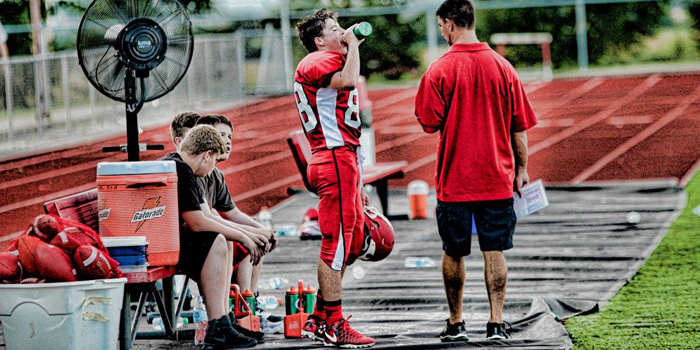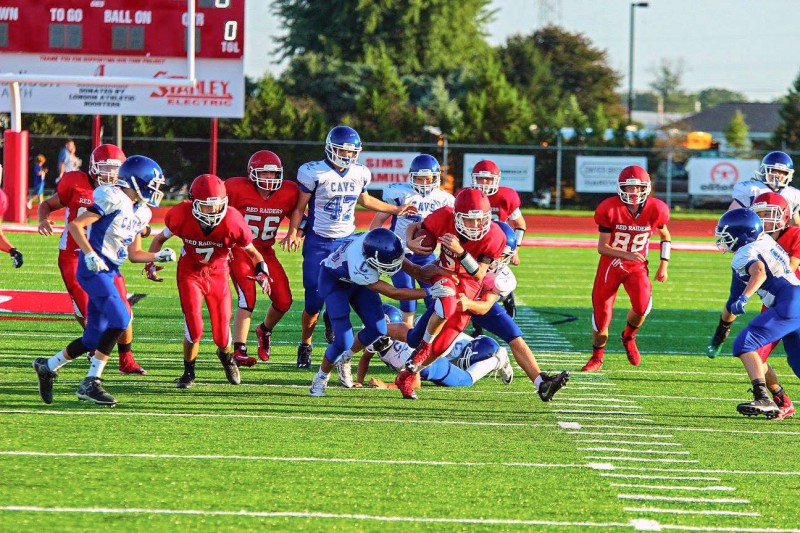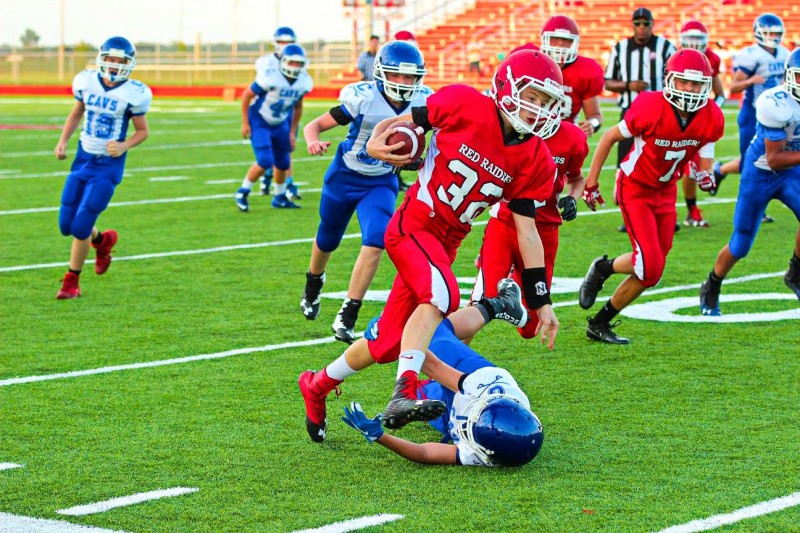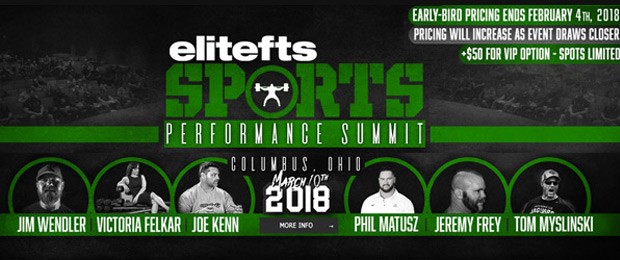
If an athlete has followed the timeline described in the previous articles then they will be well ahead of their teammates who are off playing AAU basketball (you know, the kids who start playing AAU in the fifth grade). Go ahead and let that sink in for a minute. These kids play three to five games a day. Do you really think kids at that age are doing anything right mechanically if you just throw them into tournaments where the major focus is winning? Think about how many games a player has played by the time they get to the NBA.
All that running and no lifting — that’s a lot of wear and tear on their bodies. It’s like a car: your brakes are only good for so many miles before you need to replace them. Just an FYI, there’s an increase in injuries with rookies in the NBA over the past couple years. And I’m willing to bet it wasn’t the landing in the NBA that caused the injury. It was the thousand other times the athlete landed wrong prior. That, combined with the fact most basketball players don’t do any strength training. You know, so they can ball more. Can’t be too bulky, bro. Rant over.
PART 1: Programming for Athletes — The Youth Athlete: Grades 1-3, Ages 6-9
Coaches and parents, remember at this age that too much competition wastes valuable training time. A lot of young athletes during this time are not trained properly because of coaches or parents who are too eager to have little Johnny winning, and end up neglecting this time to develop his athletic skills utilizing a properly managed program. But with that said, too little competition will actually slow the process of an athlete learning the technical, tactical, and decision-making skills they need in game situations, which they will need when they get to the next level. As coaches, we need to do a spectacular job managing our athletes' programs through this age range, as growth spurts hurt (they're called growing pains for a reason). With the young athlete being more prone to injury, we need to also focus on recovery. These athletes are undergoing rapid physical development, increased workloads, new mental health challenges, and hormonal changes. Athletes during this stage are set up to experience overtraining and burnout more so than any other stage. Keep that in mind, as this requires just as much management as a high caliber athlete and I don’t think many of us realize that.
“Youth strength development is a slow roast” — Fred Eaves, NSCA 2015 High School Strength Coach of the Year
This stage is probably the most important for setting these young athletes up for success. This stage starts with the onset of the athlete’s peak height velocity (PHV). This is their growth spurt. It’s the period in which the athlete will grow the fastest during their adolescent years and it also coincides with the onset of puberty. Females typically hit their growth spurt earlier (around 11) than males (around 13) but males usually grow more during this time. Using the ages of 13 and 14 is just a guideline. Some kids start early while others start late.
Why is the PHV important? Glad you asked. If you remember in the previous articles, athletes are more sensitive to certain types of training during certain periods of their development. These periods are known as accelerated adaption to training. For example, an athlete can make accelerated strength gains in a certain window. If they miss this window they can still make those strength gains, just not as quickly. As coaches, we need to take this into consideration as we program for these athletes. Studies have shown that optimal aerobic trainability begins with the onset of PHV but optimal strength training is better toward the end of puberty. This is because, about a year after PHV, peak weight and bone velocity occur, which is the perfect time for strength training. Keep in mind, though, that as a young athlete goes through a growth spurt they are susceptible to injury. Coaching middle school and high school volleyball players, I've seen this a lot. A kid would leave for school ball at five feet, seven inches and come back at six feet, three inches, looking like a baby giraffe trying to learn how to move again. New levers can almost guarantee new movement patterns. One day they will have perfect technique, and the next day they grow three inches and look like they’ve never been coached in their life.
We still want to focus on two to three sports in different seasons. As they approach high school we can start to think of doing only one sport, but that’s the athlete's decision, not ours. As the kids start to compete more seriously we still don’t want the focus to be on winning. They need to continue to apply what they’ve learned in practice. Continue to develop sport skills, but as we move towards the end of this stage we can begin to focus on sport-specific skills. As we’ve talked about before, athletes should play all positions on both sides of the ball. But as they progress towards the end of this stage, they will begin to focus on position and event specialization. The only exception is the athlete who matures early.
This is the age where we can start to incorporate mental training and mental preparation. Young athletes need to learn how to cope with the new physical and mental challenges they will face in competition. We need to teach them how to mentally prepare for competition and how to mentally handle wins and losses. Losses are opportunities to learn and get better. This includes things like imagery, goal setting, learning how to relax, positive self-talk, learning to stop thoughts, and how to be self-aware of strengths and weaknesses. I know we aren’t psychologists, but understanding things like this is part of coaching. If you’re not well-versed in these things then please take the time to get better and learn them. Due to a lot of influence from their peers, along with fighting with mom and dad, this a very important time for you as a coach. You may not just to be coaching them on how to squat or throw a ball. Many of my athletes confided in me and looked to me as a mentor, older brother, or father figure.
PART 2: Programming for Athletes — The Youth Athlete: Grades 4-6, Ages 10-12
I know I put this in the last article but I’m putting it here again just to reiterate it. Your female athletes need to be taught and coached on proper movement and strength work. As stated with the AAU example earlier in the article, the same is seen with females and volleyball. ACL injuries are an epidemic for female athletes when they should never be an issue. This upsets me and it should upset you as a coach. The majority of ACL injuries occur when the athlete decelerates, changes direction, or lands. These are non-contact injuries and we can greatly decrease this risk by reinforcing proper technique during training.
That’s all I have to say about that.
Coaches, this is such an important period for young kids who don’t participate in sports and physical activity. I challenge you to create and provide a safe and welcoming environment for those that aren’t interested in sports, especially strength coaches. We all know the weight room can be a safe haven for a lot of kids. Some of the most important lessons I’ve ever learned occurred in the weight room. In fact, it saved my life. Provide that outlet for all kids, not just athletes.
Programming Considerations
Early Stages
This is a great time to build an aerobic base. When and how you do that is up to you. I personally would just do it at the end of a workout with some tempo-based training. We still want to keep our focus on general based skill acquisition. We want to perfect movements and own positions.
Speed Training
The warm-up should consist of marching, arm action, skipping, and wall pistons. We need to put emphasis on great posture, correct arm and leg drive, and proper head position. After a good warm-up that engrains the patterns, we then want to put those patterns into play. Use short distances with full recovery.
Warm-Up:
- Jog — 10 yards
- Skip — 10 yards
- High-Knee March — 10 yards
- A-Skip — 10 yards
- Fast High-Knees — 10 yards
- Horse Paw — 10 yards
- B-Skip — 10 yards
Skill Development:
- Arm Action — 2x10 seconds slow, 2x10 seconds medium, 2x10 seconds fast
- Wall Lean Pistons — 2x5 each leg; performed by one knee up on command, foot strike, and slowly returns to starting; you can increase speed once pattern is crisp
Application:
- Push-Up Position Start — 6x10 yards with breakdown at 10 yards; allow for optimal rest and use this as an active recovery period and time to coach
Jumping
Just like running, this is the best time to train jumping. Again, an emphasis on movement quality should be the focus.
Warm-Up:
- Jog — 10 yards
- Skip — 10 yards
- High-Knee March — 10 yards
- A-Skip — 10 yards
- Fast High-Knees — 10 yards
- Horse Paw — 10 yards
- B-Skip — 10 yards
Skill Development:
- Standing to Ready Position — 2x5
- Step and Stick — 2x5
- Depth Drop — 2x3
Application:
- Standing to Ready Position to Jump to Stick Landing — 2x3
- Depth Drop (Stick Landing) to Jump to Stick Landing — 2x3
Endurance Training
This is performed as tempo-based work at the end of the workout. Utilize carries, bodyweight movements, medicine balls, and other fun game-based activities.
Strength Training
Time spent in the weight room should focus on bracing, squatting, hinging, pushing, pulling, and carrying.
Day 1
Goblet Squat — 3x10
Kettlebell Deadlift off Blocks — 3x10
Push-Up Variation —3xAMRAP
Pull-Up Variation — 3xAMRAP
Carry — Something heavy
Day 2
This day focuses on ground-based movements for distance.
Split Squat — 3x8 each leg
Glute Bridge — 3x10
Half-Kneeling Overhead Press — 3x8 each arm
Inverted Row — 3xAMRAP
Carry — Something heavy
Later Stages
During the later stages, we want to focus more on strength development. So, we can utilize a more traditional strength-based program. We can start to emphasize sport-specific skills while still focusing on perfecting movement.
Speed Training
The warm-up should consist of marching, arm action, skipping, and wall pistons. We need to put emphasis on great posture, correct arm and leg drive, and proper head position. After a good warm-up that engrains the patterns, we then want to put those patterns into play. Use short distances with full recovery.
Warm-Up:
- Jog — 10 yards
- Skip — 10 yards
- High-Knee March — 10 yards
- A-Skip — 10 yards
- Fast High-Knees — 10 yards
- Horse Paw — 10 yards
- B-Skip — 10 yards
- Various Ankling work
Skill Development:
- Arm Action — 2x10 seconds slow, 2x10 seconds medium, 2x10 seconds fast
- Wall Lean Pistons — 2x5 each leg; performed by one knee up on command, foot strike, and slowly returns to starting; you can increase speed once pattern is crisp
Application:
- Half-Kneeling Start — 6x10 yards with breakdown at 10 yards; focus on loading the ankle and maintaining a good shin angle, allow for optimal rest, and use this as an active recovery period and time to coach
Jumping
Remember that emphasis on movement quality should be the focus.
Warm-Up:
- Jog — 10 yards
- Skip — 10 yards
- High-Knee March — 10 yards
- A-Skip — 10 yards
- Fast High-Knees — 10 yards
- Horse Paw — 10 yards
- B-Skip — 10 yards
- Various Ankling Work
Skill Development:
- Quick Ready Single-Leg Positions — 2x5
- Step and Stick Single-Leg Ready Position — 2x5
- Depth Drop Single-Leg Landing — 2x3
Application:
- Single-Leg Jump to Double-Leg Landing — 2x6 each leg
Endurance Training
The athletes should perform slightly less than the early stage but utilize the same setup with the tempo work.
Strength Training
Time spent in the weight room should focus on bracing, squatting, hinging, pushing, pulling, and carrying.
Day 1
This day focuses on ground-based movements.
Overhead Medicine Ball Throws — 3x5
Front Squat — 3x6
Half-Kneeling Overhead Press — 3x10
Dumbbell Rows — 3x10 each arm
Carry — Something heavy
Day 2
This day focuses on ground-based movements for distance.
Trap Bar Deadlift — 3x6
Bench Press — 3x10
Pull-Up Variations — 3x5-10
Split Squat — 3x6
Prowler Push — Heavy
If you don’t train this age range then reach out to the coaches that do to help them implement warm-ups and structure practices that will benefit those athletes in the long-term. If you need help with this please feel free to contact me at TheSCDC@gmail.com.
Photo credit: Chris Whitacre of London Football Gridiron Club













1 Comment